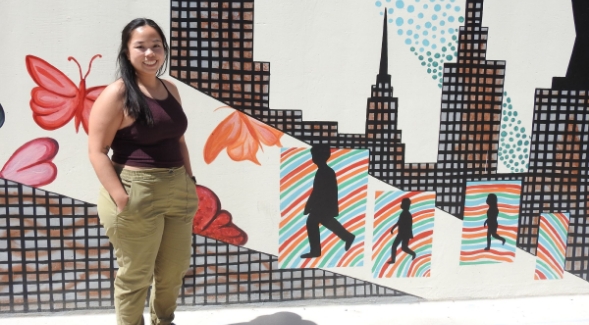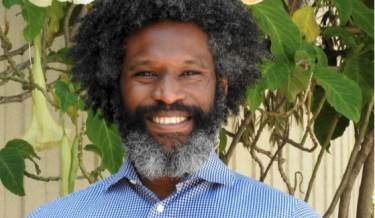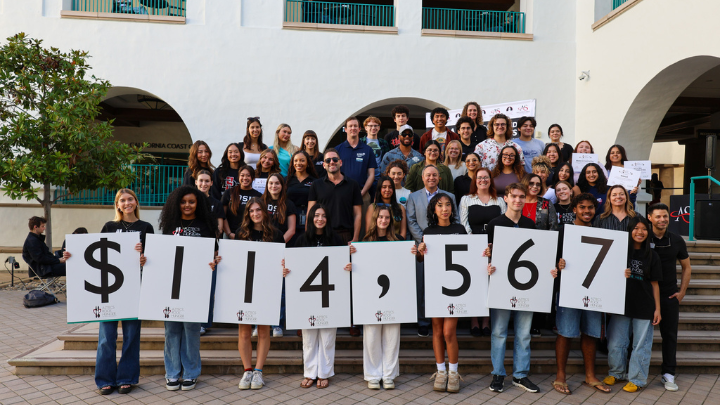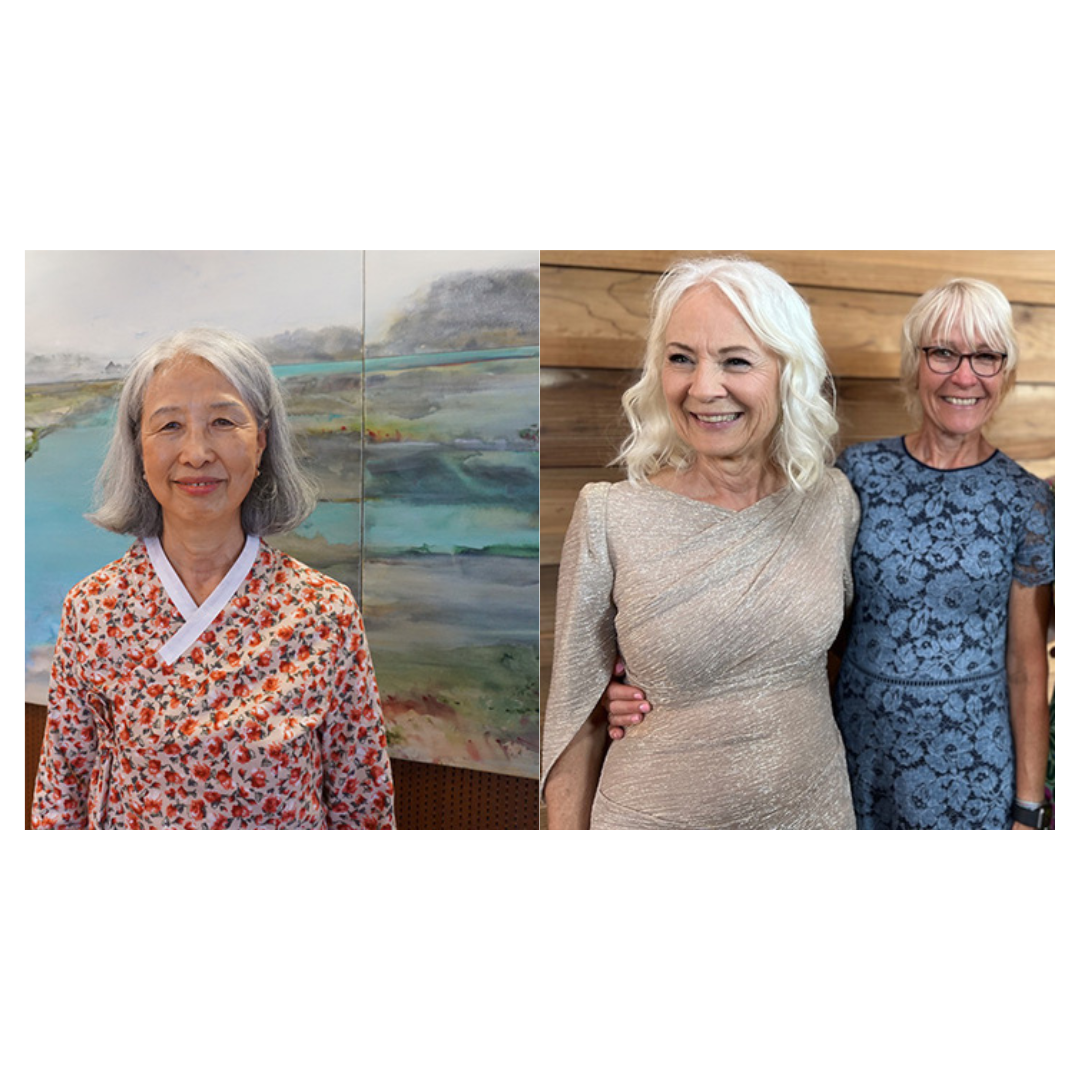Passion Drives Graduate Student Research at SDSU
Theses and dissertations investigate questions from the genetics of PTSD to gravity on the moon.

Growing up in the multilingual San Gabriel Valley, Jonathan Robinson Anthony was always fascinated by languages. In addition, his uncle developed aphasia — a condition that makes it difficult to speak.
“He struggled with re-learning how to talk,” said Robinson Anthony.
At San Diego State University, he has combined his love of languages with a desire to help people with language disorders. He’s one of many graduate students across the university whose passion drives their research interests. These are the stories of a few who will be graduating this spring.

Finding the right words
Robinson Anthony received an NIH fellowship to study how bilingual English and Spanish speakers with and without a history of developmental language disorder process cognates. These words sound similar and mean the same thing in both languages, like “elephant” and “elefante” or “pear” and “pera”.
“Between 10,000 to 20,000 words are cognates between English and Spanish,” said Robinson Anthony. “You hear the word in Spanish and you're not too sure what the meaning is, more than likely you're able to draw on your knowledge from English to guess that meaning.”
Because this cross-language interaction supports word recognition, Robinson Anthony thinks being bilingual could help people with language disorders strengthen their language skills. His doctoral degree is in Language and Communicative Disorders, a joint doctoral program between San Diego State University and University of California, San Diego. He plans to continue the same line of research as a professor.
To the moon and beyond
A mistake on her community college application led Giaky Nguyen to physics.
“I had accidentally written down physics instead of psychology,” said Nguyen, who moved to the U.S. from Australia when she was 13 and was the first person in her family to go to college. When she informed a counselor about the mistake, psychology was already over-enrolled. “And so my first semester in community college had me taking physics classes. I fell in love with it and never switched back.”
Her mistake paid off, eventually leading her to pursue an M.S. in astronomy at SDSU during the uncertainties of the COVID-19 pandemic.
“I still wanted to be able to pursue something that I cared about a lot,” said Nguyen.
For her thesis, she developed a computational model for calculating fluctuations in gravity on the surface of the moon.
“One region will have a lot more gravity than another region,” she said. This can send spacecraft off course when they fly above craters with uneven distributions of mass. “There have been tons of issues with satellites falling into the lunar surface.”
Her research could help future spacecraft descend to the surface of other worlds, like Mars, without a hitch.
“We can't just have those things that we work decades on crash into the surface of Mars,” she said. “To be able to implement this model to create fast and accurate depictions of surface gravity is something that is very important.”
Designing better batteries
Spencer Bravo is passionate about renewable energy.
“Our future, I think, will be largely bound by the ways that we're able to store energy and transport energy,” he said. “If you could drive your electric car a thousand-plus miles without having to recharge, that'd be a lot better than having to make multiple stops throughout a long trip.”
Bravo is finishing up SDSU's BS/MS 4+1 degree program in mechanical engineering: a program that grants students both a B.S. and an M.S. in the field in just five years. He began doing research as a sophomore.
“It just seemed like a really good deal to be able to complete both degrees, rather than reapplying for another school and taking two years,” said Bravo.
His thesis characterizes the surface morphology and chemical composition of the highly reactive materials that go into lithium metal batteries.
“Lithium metal batteries are an important research topic because if they were made rechargeable, you could have about 10 times the capacity of a traditional lithium-ion battery, which you find in your phone, laptop, or car.”
After graduation, Bravo will begin working as a research associate at a battery research company in San Diego.
The genetics of PTSD
After experiencing a traumatic event, some people develop post-traumatic stress disorder (PTSD) and others do not.
For his dissertation, Adam Maihofer combed through the human genome looking for areas that increase a person’s likelihood of developing the condition.
“We're talking about tens of thousands of variants with minute effects that, in aggregate, produce disease risk.”
Maihofer will graduate with a doctoral degree in Public Health epidemiology through a joint doctoral program between SDSU and UCSD. He also received a B.A. in psychology and an M.S. in statistics from SDSU.
“I decided to go deeper into epidemiology to complement the training I received,” he said.
Originally from San Diego, Maihofer has balanced his passion for research with Brazilian jiu-jitsu.
“It was kind of this stabilizing force in my life the whole time. It really kept me together mentally and physically,” he said. He just received his brown belt after many years of practicing the martial art. “You can get a doctorate faster than you can get a black belt.”
Maihofer hopes his research will contribute to the development of new treatments for PTSD.
Big data tells the story of immigration
Elizabeth Fabio has an undergraduate degree in bioengineering, but after working in the field, she realized her passions lay elsewhere. At the height of the pandemic, she and her friends started a documentary club.
“And I think the one that affected me the most was Immigration Nation from Netflix,” she said.
Fabio is from San Diego, but her parents immigrated to the U.S. from the Philippines. Their experience was very different from the heartbreaking stories of deportation depicted in the documentary.
“I've heard friends talk about their hardships with immigration, but my family got in easier to the U.S.,” said Fabio.
Fabio felt motivated to delve deeper into the economic and political factors that have impacted U.S. immigration — and to pursue an M.S. in Big Data Analytics at SDSU. For her thesis, she conducted a time series analysis of U.S. immigration data over the past century.
“We looked at major events like World War I, World War II, the Great Depression; we looked into 9/11, how that affected immigration,” said Fabio.
In addition, she analyzed immigration patterns during political turmoil in different Central American countries. She thinks such analyses could be useful for shaping immigration policy.
Outside of her studies, Fabio is an avid adventurer. She’s hiked to the summit of Mount Kilimanjaro, the south base camp of Mount Everest, and more locally, Potato Chip Rock. After graduation, she’s embarking on a camper van tour of the U.S., followed by a trip to Peru, and then, the Philippines, which she’s never visited.
Her advice to people considering going back to school?
“If you have a spark of passion later in life for a new topic, don't be self-conscious about your age. Just pursue it.”



